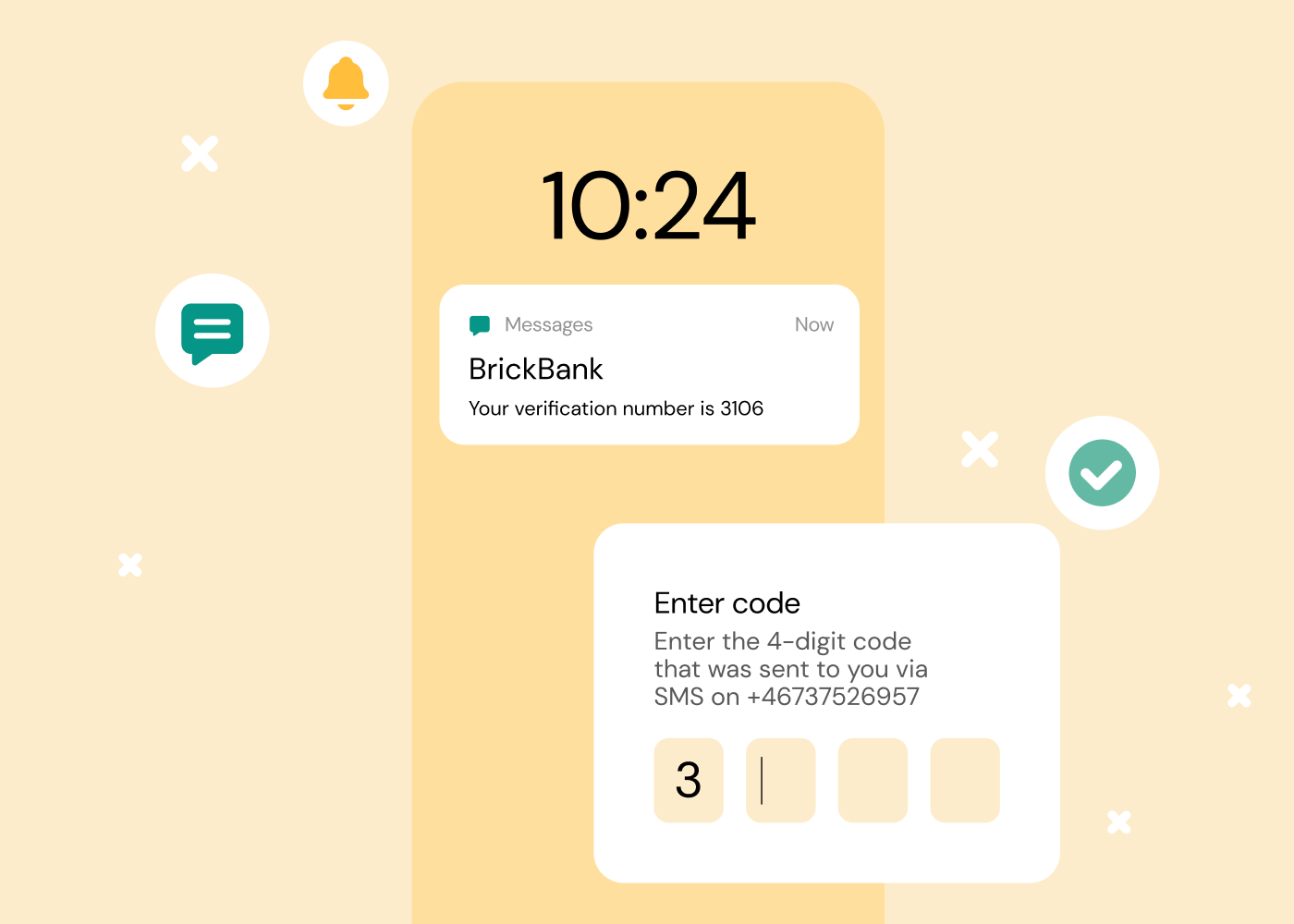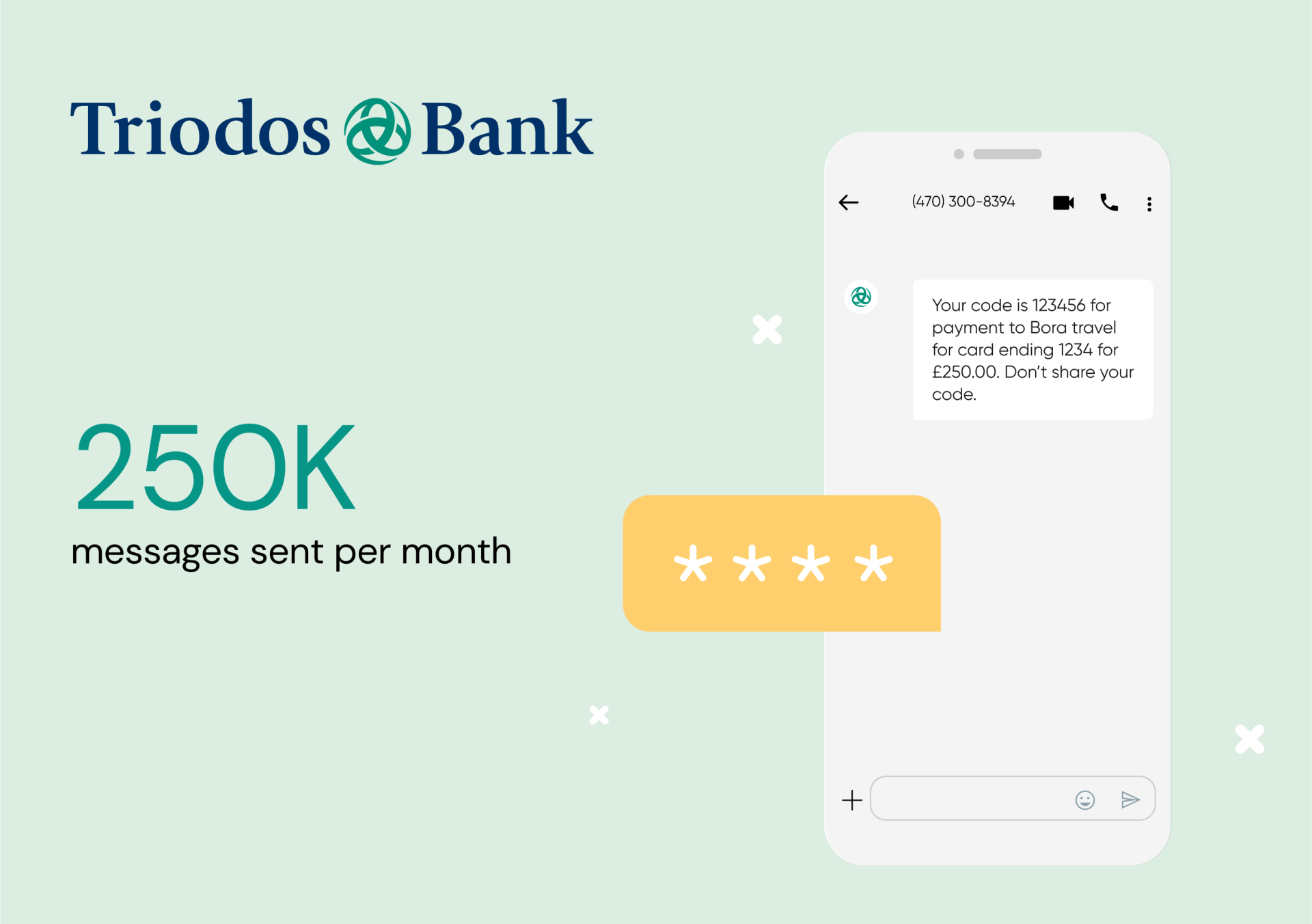Insights, Products
SMS verification explained: What it is and how it works

Insights, Products

In July 2024, the largest real-world password breach in history exposed over 10 billion passwords from users around the world. While not every password was valuable to hackers, the breach is a wake-up call about how vulnerable traditional password-based security can be. In fact, more than 80% of breaches stem from weak, reused, or stolen passwords. For businesses, it’s clear: Relying on traditional passwords isn’t cutting it anymore, and it’s time to adopt stronger, multi-layered verification methods to stay ahead of security threats.
That’s where SMS verification comes in – a simple, yet highly effective, authentication solution that’s accessible to users globally.
Let’s explore the basics of SMS text verification, how it works, and how it can help your business from cybersecurity risks associated with compromised credentials.
SMS text verification is a security process that uses Short Message Service (SMS) to confirm the identity of an end user during online transactions, account logins, or other sensitive activities. It’s widely used by websites, apps, banks, and social networks to double-check a user’s identity.
The main goal of SMS verification is to strengthen security beyond just a username and password, helping businesses reduce the risk of unauthorized access, identity theft, and other digital threats.
You might hear SMS-based verification referred to in different ways. While these terms might sound alike, they highlight different aspects of SMS-based verification:
From an end user’s perspective, SMS verification looks like the following:

It’s simple, quick, and secure. But heads up! If you ever get an SMS verification code you didn’t request, stay alert, because something might be up.
While SMS isn’t encrypted, it still offers a solid level of security and is better than having no protection at all. SMS OTPs are usually affordable and widely accessible, making them a familiar and convenient option for many users.
A secure alternative to SMS authentication could be using mobile authenticator apps like Google Authenticator or Microsoft Authenticator. However, these apps require separate setup and management, and they might not be as widely available as SMS.
Our 2024 Customer Connections report shows that 61% of consumers expect 2FA messages to arrive in a minute or less. And when SMS is typically delivered instantly, it’s a great channel to meet those expectations.
SMS authentication provides a good layer of security for transactions and logins, but it won’t be completely successful in stopping attacks in all circumstances. Its vulnerabilities to issues like SIM swapping and smishing can also leave people susceptible to sophisticated attacks.
Let’s summarize a few of the pros and cons of SMS verification.
|
Pros of SMS verification |
Cons of SMS verification |
| More secure than using only traditional username + password tools | Vulnerabilities like SIM swapping and hacking can compromise accounts |
| Deters common fraud tactics like basic bot attacks | Possibility of phishing attacks done on one-time passcodes |
| Familiar and user-friendly, with many users understanding how to use SMS and verification | Subject to limitations of SMS security, including no end-to-end encryption |
| Widely supported across mobile devices, with no additional hardware needed | Synced devices mean people can receive one-time passcodes on multiple devices, and the messages can be intercepted |
| Cost-effective in many markets | Can be expensive in other markets |
| Easy for businesses to implement due to SMS’s simplicity and widespread compatibility | People often lose their devices, which could compromise security |
Additionally, enterprises need to be aware of types of more sophisticated SMS fraud like Artificially Inflated Traffic (AIT) that could rack up huge bills if they send SMS one-time passwords.
Now that we’ve been through what SMS verification is and how it’s used, let’s go through some real-life examples of businesses using it for account verification in banking, technology, and food delivery.
In the world of banking and finance, SMS verification codes add an additional layer of security banks need to build trust – a must in today’s digital world.
SMS verification is exactly how Triodos Bank, a world leader in sustainable banking, ensures customer account security. Anytime there’s an attempt to log in to a user’s online account or mobile app, Triodos Bank sends an OTP to that user’s registered mobile number. It’s an easy way to verify identities and keep things secure.

SaaS and technology companies often rely on timely notifications to keep users in the loop and ensure positive customer experiences. In the case of EasyPark Group, a leading global parking tech company, they use SMS verification to send timely notifications to customers and let them know that their parking is about to expire. This adds an extra layer of security in their app login process and makes sure that the messages reach the right person.
This has been an incredibly important part of their customer communications strategy, and adding verification to their app has increased their conversion rate – or the number of people who successfully entered the correct OTP code – by about 7%.

Have you ever been in the position where your brand is offering discounts or incentives to new users, but then you realize that some people are creating multiple fake accounts to use discount codes more than once? That problem is exactly why aiqfome, one of the largest food delivery platforms in Brazil, decided to roll out SMS verification via Android and iOS.
Now, aiqfome can verify all new app sign-ups when a customer signs up for a new account. Each new account user is sent a verification code via text message in real-time when they sign up, ensuring the mobile phone number can only be used once.
This approach can help brands significantly decrease the number of fake and duplicate accounts. For aiqfome, it has been critical to preserve revenue that was being lost by their network of partner restaurants.
There are some situations where a business won’t opt for SMS verification. Luckily, there are some other verification methods that a business can use if this is the case.
When it comes to flash call, data verification, voice verification, and SMS verification tools, Sinch offers a unified solution called Verification API. With failover functionality, the solution automatically switches to alternate verification methods if one fails.
Magnus Lundstedt, Product Manager for Sinch Verification, describes the pros and cons of different verification methods.
SMS and email verification have the same goal of user identity but use different channels to accomplish it. Email verification typically involves sending a confirmation link or code to a user’s email address, while SMS verification typically involves a numerical code going directly to a user’s mobile device via text message.
We usually recommend blending authentication methods to offer your users the best protection and experience.
There are so many SMS text verification services out there. So how do you choose the right one?
Here are a few things to keep in mind as you choose an SMS provider:
Unfortunately, for too many businesses, the only thing stopping fake accounts from being created is a username and password. This single layer of security just isn’t enough to cut it in today’s world, where fraudsters and hackers are becoming more and more savvy.
Luckily, there are tools like SMS verification that can help you verify your users’ identities before granting access.
For more resources on SMS, check out these posts:
Or, if you want to get started with SMS verification, let’s chat. Our team can help you make sure your customer comms strategy is aligned with best practices at every step!